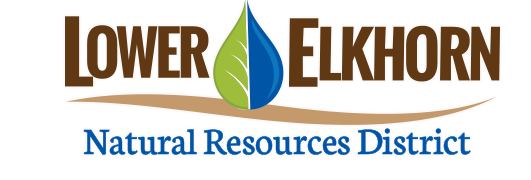Best Management Practices are key, especially in dry times
/As dry conditions continue, it not only affects this year’s crop, but could impact next year’s as well, leaving aquifers deeply impacted. At their September board meeting, the Lower Elkhorn Natural Resources District (LENRD) voted to formally declare a drought across their 15-county district.
Mike Sousek, general manager for the LENRD, said, “It’s important that we’re all conserving the groundwater we share. If this situation continues, our board will have some tough decisions to make by Nov. 1st.” If the district remains in a D3 or D4 drought designation, November 1st is the deadline for the board to make any decisions concerning water use restrictions for next year.
Many cities and towns across the district have water-saving measures in place, encouraging residents to limit their water use on their scheduled days. The LENRD reminds citizens to work together to conserve water. Sousek said, “We can help each other by using less water and being mindful of our day-to-day usage.”
Best Management Practices (BMPs) are important when managing any conservation plan, especially in dry times. The district has cost-share funding available for BMPs and encourages producers to stop by their local Natural Resources Conservation Service (NRCS) office or the LENRD office in Norfolk, to look over their options and apply for the best program to fit their needs.
Water can be efficiently applied at different rates throughout the field, using Variable Rate Irrigation (VRI). Over-applying water to the soil could cause nutrient runoff or leaching beyond the root zone of the plant. Using VRI and other management tools can help prevent over-watering and could potentially improve water quality.
Soil moisture sensors are another tool that can be cost-shared with the LENRD. The sensors can help determine when and where the water is needed, saving the producers time and money. Telemetry programs are also available to connect with the sensors, giving producers quality information at their fingertips.
Water flow meters are another management tool that the district uses to measure the pumping on wells with annual allocations. Allocations in some areas have been put in place to protect current water users while allowing for the expansion of new uses. Meters first became a requirement within the LENRD in July of 2007, when the installation of a flow meter became a requirement for any new high capacity well. After the drought of 2012, it became evident that we needed to be even more proactive in the management of our groundwater since numerous in-season groundwater shortages were reported across the district. This led to the delineation of several Quantity Management Subareas which triggered the requirement to install a flow meter on existing irrigation wells within the delineated areas and attached annual groundwater allocations to some of those wells. In 2017, five years after the drought, the board also made the decision to have a sign-up period for new groundwater irrigated acres, along with a meter requirement for all high-capacity wells located within the 15-county district. Sousek said, “While the flow meter serves as the measurement device for our regulatory mechanisms, they also provide valuable information to well owners and farm operators regarding the amount of irrigation water applied to their agricultural lands, and for assessing annual water use for industry, livestock, and municipal needs as well.”
By periodically checking your irrigation meter, you can see how fast you’re using the resource and the amount being used. Meters allow you to keep track of your allocation (if you have one), to check your pivot’s efficiency, and to detect any well or pump problems before they become severe. Everything in agriculture is constantly measured and calculated. Measuring and managing the water with flow meters is another important part of a producer’s management plan.
Sousek added, “Keeping track of your water meter during the growing season can help determine how close you are getting to the annual allocation. You can also improve your irrigation efficiency by keeping track of how much water was applied the previous week and comparing that number to the crop water use data. If you applied more water than the crop used the previous week, you may not be making room to store potential rainfall or water may be leaching below the root zone.”
Water savings can also be found with healthy soils. Soils with more organic matter can hold more moisture but building up the soil profile takes time. The LENRD encourages producers to take advantage of cost-share money available for planting cover crops and continue to develop healthy soils for enhanced water infiltration, water holding capacity, and nutrient management. Watering less often, saving time and money is the key. Good ground cover also prevents further wind erosion, keeping the soil in place. Healthy soils can also assist in protecting the quality of the water.
With the LENRD’s Conservation Cost-Share Program, there are many options for producers who are looking to conserve water, but also to protect the quality of their water at the same time. Sousek said, “Stop by or give us a call. We can work together to find the program that is right for you and your operation.”
The next Committee meeting for the LENRD board is Thursday, October 13th at 7:00 p.m. at the LENRD office in Norfolk and on Facebook Live.

